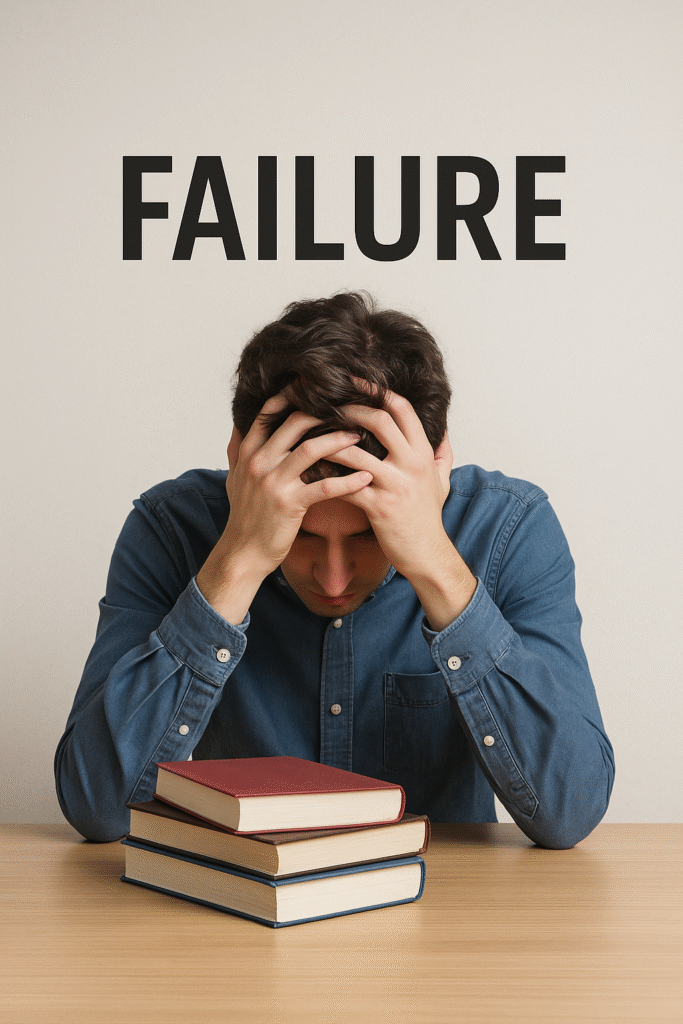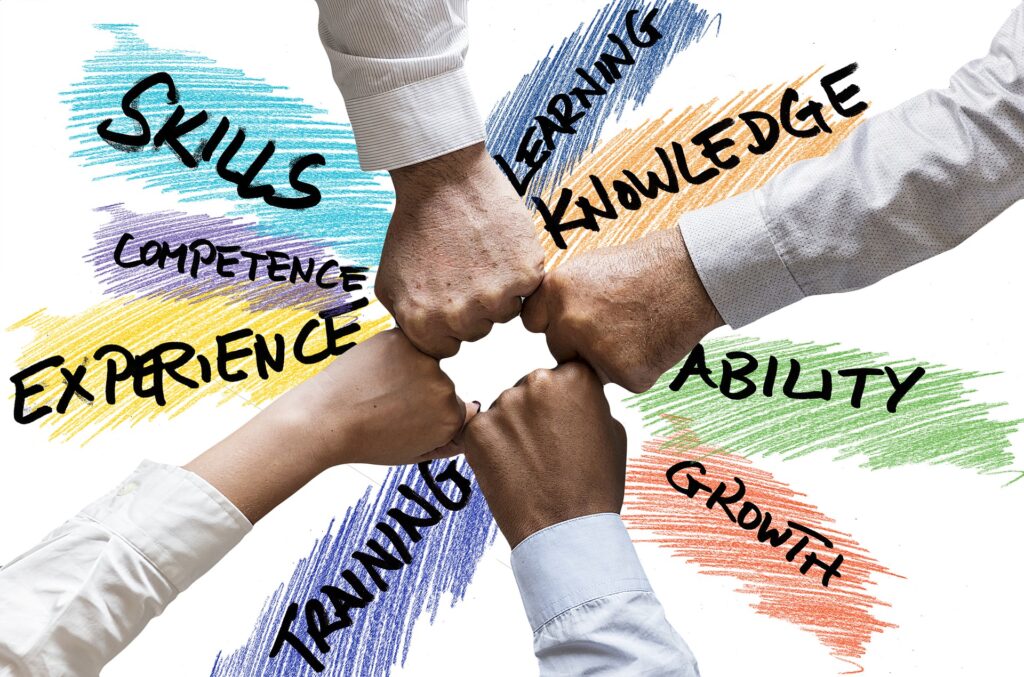A. Introduction
“On hearing the name of failure, our mind fills with guilt, shame and helplessness.”
And the truth is this — during failure, it seems that nothing will work, you start running away from the present, and every sight feels like a judgment. Even the words of motivation start to seem like a lie. The biggest sorrow is when you start losing complete faith in yourself.
Is failure just a fall?
It is a matter to think about — is failure really a full stop to life?
Or is it a pause button that gives us a chance to learn something, understand something and shape ourselves in a new way?
Life probably wants to show us a lesson hidden behind every failure.

Failure is not just a result but a reaction we give when things don’t meet our expectations.
Think of a player – he practices every day. He enjoys every shot in every match, whether it is right or wrong. For him every stage of the process is an experience, not a failure. And while enjoying this, one day he gets what is another by-product of this process, which we call success.
In this blog we will learn some practical tips on how to look at what we consider as failure in a new way, and how to use this phase as a weapon for ourselves
B. What is Failure Really?
We tend to over dramatize failure. In reality:
• Failure = When results do not match expectations.
• Meaning, it is a signal that some strategy, effort or timing was wrong. We are not changing with time, not reinventing ourselves, and if time permits, we have understood these signals and made ourselves flexible.
Nokia

• There was a time when Nokia was the king of the mobile phone market.
• But they delayed accepting the Android revolution and stuck to their operating system (Symbian).
• Result: Their dominance in the market ended.
Initial failure was a signal for Nokia that the market is changing, adapt to this change.
“Failure is simply the opportunity to begin again, this time more intelligently.” – Henry Ford
Failure is a feedback system, not a punishment. But the problem occurs when we connect it to our identity:
• “I failed” → an incident.
• “I am a failure” → a dangerous belief.
Until we understand this difference, our confidence will be broken again and again.
C. Why Failure Hurts Confidence?
1. Emotional Setback
The first impact after failure is the drain of emotional energy.
• You feel that all your hard work has been wasted.
• Both your heart and mind get tired.
• This thought comes: “After coming so far, after so much hard work, I still did not get anything.”
And as a result, your motivation falls, and you stop before giving your best.
2. Social Pressure
The second big factor after failure is the pressure of society.
• The mind keeps ringing for hours: “What will people say?”
• Whenever you talk to someone, it seems as if they are making fun of you.
• This feeling that “everyone thinks I am a failure” breaks your confidence 10x more.
And as a result you get caught up in the thoughts of others, and stop focusing on your goals.
3. Internal Dialogue
The most dangerous thing after failure is your self-talk.
• You blame yourself.
• Self-doubt begins:
• “Maybe I’m not good enough.”
• “Maybe I will never be successful.”
As a result, this negative dialogue stops the possibilities of your growth.
One of my students attempted GPAT. The result came, and she was just 1 mark behind the cutoff.
• She said: “Sir, I will not be able to do it.”
• At that time, she was mentally exhausted.
But in the next attempt she changed her strategy:
• Identified points where she had not paid attention
• Kept in regular contact with mentors
• Made constant positive self-talk her weapon

👉 Result: She got GPAT AIR-80th rank and also qualified NIPER with a good rank
D. How to Bounce Back – Step by Step
This is a 5-Step Bounce-Back Formula:
Step 1: Accept and Acknowledge
After failure, we often start making excuses. We blame someone, blame some incident. We start saying that everyone is after me to defeat me. It is not my fault, but denial does not help. The first step is to honestly accept: “Yes, I failed.” And this is the most important step. Yes, take responsibility of your failure.
Step 2: Detach Identity from Outcome
You do not become a loser because of an incident. Separate “I failed” from “I am a failure.”
I often tell myself in tough situations that I am not one of those who lose.
Step 3: Analyze the Feedback
Failure = Data. Ask:
• Was the preparation insufficient? Are we lost in our past successes and unable to come out of it?
• Was the strategy wrong? Are we not reinventing ourselves according to the time?
• Were there too many distractions? Are we unable to prioritize the important tasks in the process of doing too many things?
Step 4: Reset Goals in Small Steps
Break big goals into small chunks. Focus only on today’s work, don’t worry about how much work is still left.
Step 5: Take Action Immediately
Confidence comes back when you take action. Small wins build momentum.
“Our greatest glory is not in never falling, but in rising every time we fall.” – Confucius

E. Building Confidence Again
i. Positive People Surroundings
Your circle builds or breaks your confidence. Negative people = more doubt. Positive people = lift and motivation. If you are not able to find positive people in surroundings, talk them in to books, they are always available to help you.
ii. Daily Affirmations
Start saying to yourself:
• I can lose but I don’t accept defeat
• What has this time taught me, what can I learn from it
• The more you heat gold, the more you grind it, the more it shines, in the same way life is making me better
• “I will bounce back stronger.”
iii. Focus on Small Wins
Complete every small goal that you have written in your diary and tick them. Celebrate a small achievement every day. Appreciate yourself for these small wins. These dopamine shots restore confidence.

F. Real-Life Examples of Comebacks
1. Abraham Lincoln – From Repeated Failures to Presidency
Abraham Lincoln’s life is a perfect example that a person’s dreams should not be broken even after failures.
• He faced defeat many times in his political career. He was defeated in multiple elections – be it State Legislature or Congress.

• He also had to face hardships in personal life – death of his fiancée and financial struggles at home.
• He struggled with depression and step by step, he learned from his mistakes, developed leadership qualities, and eventually became the 16th President of the United States.
• And the irony is that the person who kept losing elections again and again, became immortal in the history of Presidential elections as “The Great Emancipator”.
2. Steve Jobs – Fired from Apple to iPhone Revolution
The story of Steve Jobs is a strong reminder that a comeback is possible even after failure, and sometimes that comeback changes the world.

• Jobs started his own company Apple, but there came a time when his own board members kicked him out of the company. Imagine, being kicked out of your own creation!
• But he did not let this setback become his full stop. During this gap, he created NeXT and Pixar (Pixar also made path-breaking movies like Toy Story).
• A few years later, Apple called Jobs back, and his vision led to the iPod, iPhone and iPad – which revolutionized the entire technology industry.
• Today, Apple is a trillion-dollar company, and Jobs is revered as a legendary innovator.
3. Amitabh Bachchan – From Bankruptcy to Stardom Again
India’s megastar Amitabh Bachchan also went through a phase when his life seemed to be over.
• In the 1990s, his production house ABCL (Amitabh Bachchan Corporation Ltd.) flopped and he went bankrupt. There were fewer roles for him in the industry, and people thought that his career was over.

• He had so much debt that even his house was up for auction. Many experts advised him to declare himself bankrupt and not pay anyone else’s debt.
• But he made a comeback in his own style. He created a new identity for himself as the host of the TV show Kaun Banega Crorepati (KBC).
• After the success of KBC, his film career also revived, and even today he is counted among the most respected and admired icons of Bollywood.
G. Practical Tips for Students & Professionals
1. Journal Your Thoughts 🖊️
When failure comes, the first thing that comes to mind is a storm of negative thoughts. It is wrong to suppress or ignore these thoughts – because the more you suppress them, the more they will come back.

Instead, write down your thoughts in a diary/notes: “I am feeling this…”, “I am afraid…” When you write, you can look at your thoughts by detaching them – like an outsider. This brings clarity and reduces overthinking.
2. Create a “Failure Resume” 📄
• In a normal resume, we write our achievements. But in a “Failure Resume” you should write all your rejections, mistakes, and failed attempts.
• Also, write in front of every failure what you learned from it. This will become the most important part of your life because when you look back at your upcoming success, you will realize that all these failures played a very important role there.
• When you look at this list, you realize that every failure has taken you one step forward.
3. The 24-Hour Rule ⏳
It is natural to feel sadness, guilt and crying after failure. It is not necessary to suppress them.

The rule is simple:
• Day 1: Do whatever you want — cry, vent out, isolation — feel your emotions fully.
• Next Day: Now just switch to solution mode. Make a new strategy, decide the next steps.
• With this rule, you acknowledge your emotions, but don’t stop engrossed in them.
4. Bounce-Back Playlist 🎧📚
• When motivation is low, keep a “toolkit” ready for yourself:
• Songs: Songs that give you energy.
• Books: Motivation or biography that shows the failure-to-success journey.

• Podcasts: Talk to mentors or speakers who give positive energy.
• Whenever you feel that you have fallen, this playlist will give you the energy to get up again.
H. Conclusion – Call to Action
Edison, Rowling, Steve Jobs, and Amitabh Bachchan — their stories all teach us one simple truth: failure does not define you, your comeback does.
Failure is not the end. It’s an important part of the success journey. Every fall gives you a chance to rise again — and that’s the real victory.
Quote to Remember:
“Success is not final, failure is not fatal: It is the courage to continue that counts.” – Winston Churchill
👉 Start looking at your failures as stepping stones. And if you’ve experienced a failure that later turned into success, share your story in the comments and inspire others.
If you are feeling low, or you believe you are going through a big failure right now, feel free to write to me at edumentorashish@gmail.com. I will try my best to guide and help you.
You can also visit my YouTube channels for more motivation, study guidance, and career tips:
📌 Edumentor Ashish
📌 Dr. Ashish Pathak Online






Your blog is a constant source of inspiration for me. Your passion for your subject matter shines through in every post, and it’s clear that you genuinely care about making a positive impact on your readers.
Thanks…these types of words will inspire me a lot
Very true story connected by me.. It takes around 4 years… To belive in myself
Just wish to say your article is as surprising The clearness in your post is just cool and i could assume youre an expert on this subject Fine with your permission allow me to grab your RSS feed to keep updated with forthcoming post Thanks a million and please keep up the enjoyable work
Hello my loved one I want to say that this post is amazing great written and include almost all significant infos I would like to look extra posts like this
Usually I do not read article on blogs however I would like to say that this writeup very compelled me to take a look at and do it Your writing style has been amazed me Thank you very nice article
Simply wish to say your article is as amazing The clearness in your post is just nice and i could assume youre an expert on this subject Well with your permission let me to grab your feed to keep updated with forthcoming post Thanks a million and please carry on the gratifying work
Thank you for your sharing. I am worried that I lack creative ideas. It is your article that makes me full of hope. Thank you. But, I have a question, can you help me? https://www.binance.com/sk/register?ref=WKAGBF7Y